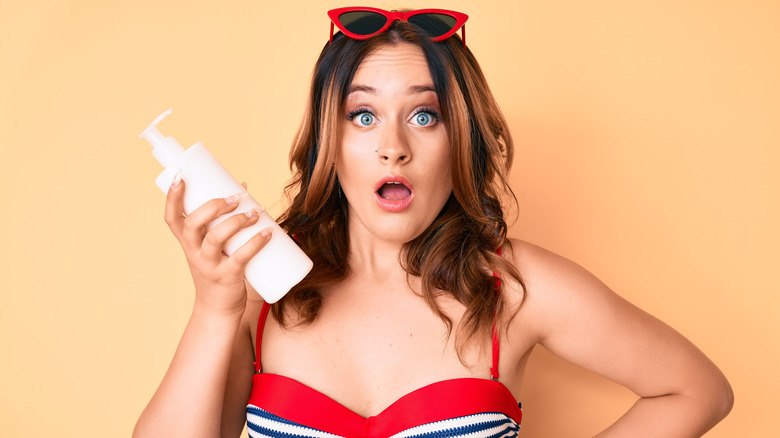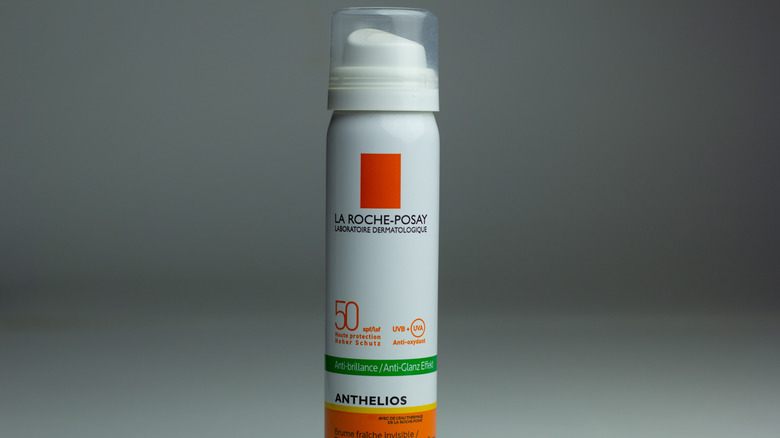You Might Be Applying Sunscreen Completely Wrong
According to the American Academy of Dermatology (AAD), skin cancer is the most common type of cancer in the U.S., and one in five Americans will be diagnosed with skin cancer in their lifetime. This is why medical experts are constantly on the offensive, regularly recommending a variety of methods of protection, such as staying in shady areas, wearing clothing from head to toe that provides adequate protection from the sun's harmful ultraviolet (UV) rays, and applying "broad-spectrum, water-resistant sunscreen with an SPF of 30 or higher."
With regard to the protection that sunscreen offers, however, it is important to note that sunscreen can be ineffective if you apply it wrong. The AAD references a survey that revealed that many people, in fact, do not apply sunscreen correctly. For example, it is crucial to reapply sunscreen every two hours while outside, since it wears off — yet the survey uncovered that roughly only a third of Americans reapply sunscreen, leaving the majority unprotected and more vulnerable to skin cancer. Other mistakes people make with regard to sunscreen include using expired products, not using enough sunscreen, using a sunscreen with an SPF that is too low to provide adequate protection, and applying sunscreen only in sunny weather. According to the AAD, approximately 80% of the sun's harmful rays can still penetrate your skin on cloudy days.
What about the effectiveness of aerosol sunscreens?
A recent survey of aerosol sunscreens conducted in Australia revealed alarming results about spray sunscreens' lack of effectiveness when it comes to sun protection. According to Cancer Council, nine commercially available spray sunscreens that were evaluated had a wide variation of spray times to achieve protection for the full body — these ranged from 29 to 98 seconds, and likely would require even longer times outside of laboratory conditions, especially at locations like the beach. The researchers also discovered that some of the aerosol sunscreens contained only half sunscreen protection, with the rest being made up of propellant.
Heather Walker, Head of SunSmart at Cancer Council Victoria, notes that applying sunscreen correctly is crucial, and with the variation in application times and sunscreen percentages across brands, it is challenging to determine how much of an aerosol to apply. "The quantity of propellant in aerosol sunscreen dilutes the amount of sunscreen dispensed and increases the amount of product needed to achieve adequate SPF coverage," Walker said, adding, "Our advice in the first instance is to avoid using aerosol sunscreen products, however if it is your preference, then exercise great caution. Even literally saturating your body with the product may not provide the level of protection you expect."
Cancer Council's overarching position for how to best protect yourself aligns with AAD's: They recommend a combination of protective clothing that should include a wide-brimmed hat and wrap-around sunglasses, staying in the shade, and correctly applying broad-spectrum, water-resistant sunscreen of SPF 30 or higher prior to going outdoors, and reapplying every two hours.


